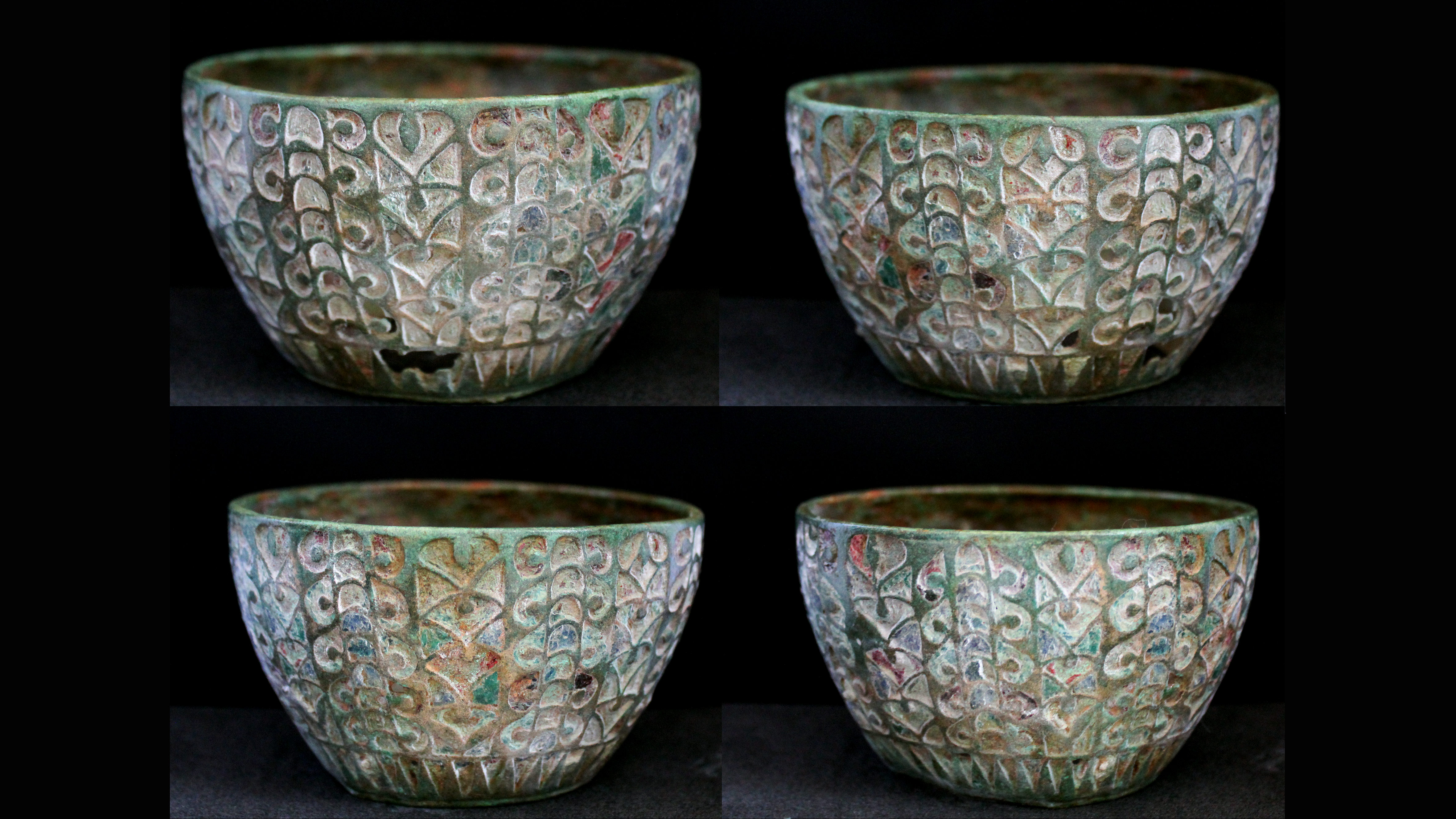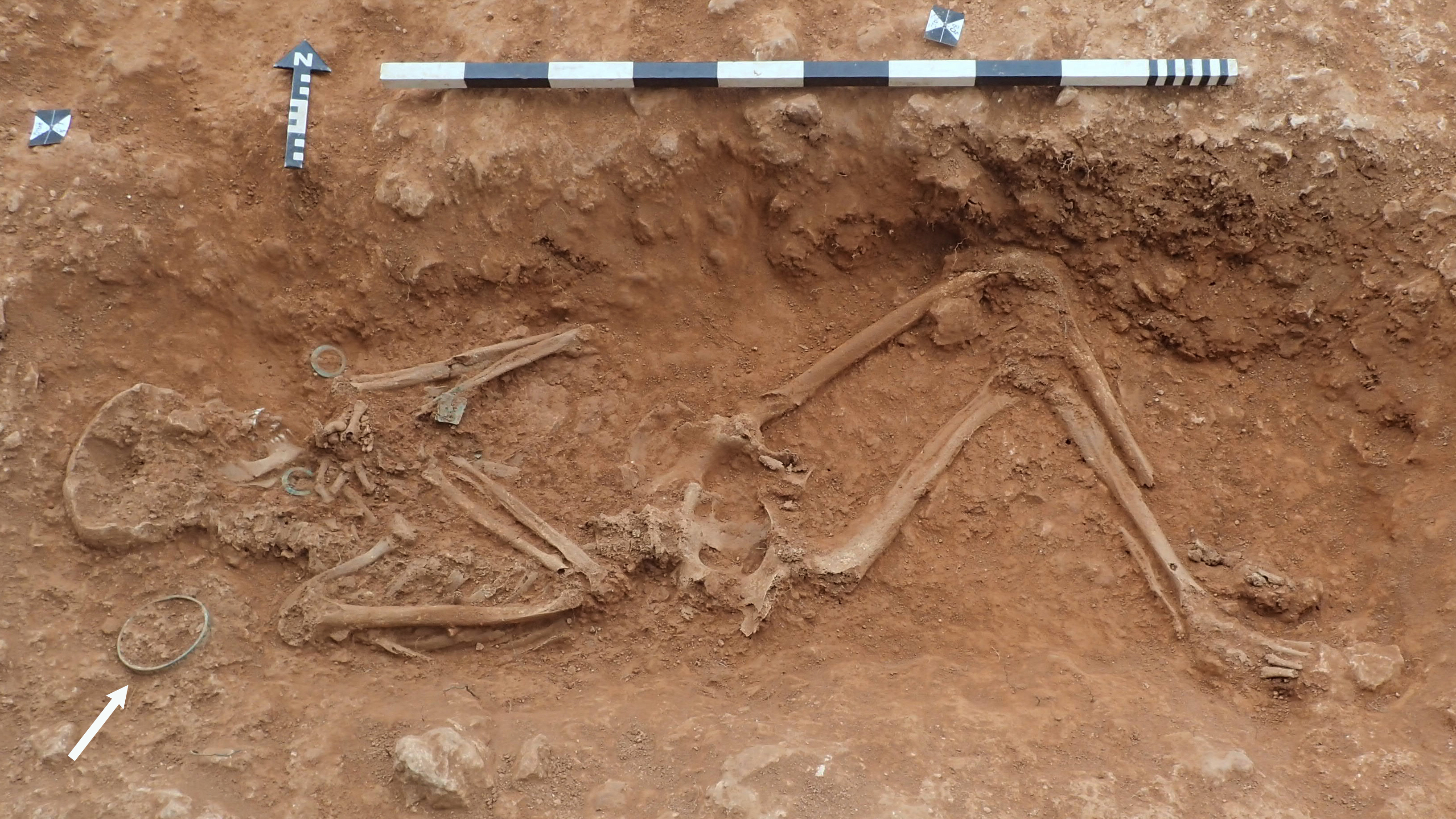1,500-year-old Anglo-Saxon burial holds a 'unique' mystery — a Roman goblet once filled with pig fat
The sixth-century burial of an Anglo-Saxon teenage girl surprised archaeologists when they discovered a small third-century Roman goblet full of pig fat near her head.

An Anglo-Saxon girl who died 1,500 years ago in England was buried with an even older artifact that has archaeologists scratching their heads: An enamel Roman-era goblet that was once filled with pig fat, a new study finds.
Archaeologists unearthed the 1,800-year-old multicolored goblet upon finding the girl's sixth-century grave in the village of Scremby in Lincolnshire, England.
"The cup was found in what might be termed a rather 'ordinary' burial," Hugh Willmott, a medieval archaeologist at the University of Sheffield, told Live Science in an email, but its one-of-a-kind nature "leads me to think that it had a more unique purpose."
In a study published in the November issue of the European Journal of Archaeology, Willmott and colleagues detail their investigation of the "Scremby Cup." It was found in 2018 in a cemetery with 49 other graves dating to A.D. 480 to 540, during the Anglo-Saxon period. The fully intact vessel was placed at the head of an adolescent female, whose grave also included two plain brooches.
The Scremby Cup is 2.2 inches (5.7 centimeters) tall and could hold roughly 1.2 cups (280 milliliters) of liquid. Inset motifs of half moons and heart shapes were cast into the vessel's copper-alloy surface and then filled with red, aquamarine and deep bluish-purple enameling. The cup's style and materials suggest it may have been imported to England from France in the middle of the third century A.D., during Britain's Roman period.
"I'm sure the cup was originally made as a drinking vessel," Willmott said, suggesting the Romans may have sipped wine from it. "However, when it was chosen to be placed in the grave, its function seems to have shifted again," he said.
Related: Anglo-Saxons plagiarized a Roman coin — and it's full of typos
Sign up for the Live Science daily newsletter now
Get the world’s most fascinating discoveries delivered straight to your inbox.

To better understand why a Roman wine goblet was buried with an Anglo-Saxon girl, Willmott and colleagues analyzed the organic residue remaining at the bottom of the vessel. They discovered a high concentration of lipids likely from pig fat.
The fat might have simply been a food product, but animal fats were sometimes used as moisturizers in Roman times, Willmott and colleagues wrote in their study. Alternatively, the fat could have had a medicinal purpose. The sixth-century Byzantine physician Anthimus, they noted, wrote that the Franks ingested raw bacon fat to treat intestinal parasites and used it to clean and heal wounds.
"It might be worth considering," Willmott said, that "the woman buried might have been someone who practiced folk medicine in the local community."
The second mystery surrounding the Scremby Cup is where the Anglo-Saxons got it from, since the Roman cup's remarkable condition suggests it was not a chance find: Could it have been passed down as an heirloom, or was it scavenged from a Roman grave? Given their analysis of the cup, either explanation is possible, the researchers wrote.
"The fact that it was clearly of some age is where its real social relevance lay," the researchers wrote. "The placement of the cup, its potential symbolic associations, and its contents represent a ritual not seen in any other female grave in the cemetery."
No other environmental evidence from the grave such as pollen has survived, Willmott added. However, samples from this and other skeletons from the cemetery are currently undergoing ancient DNA analysis, so additional clues about the Anglo-Saxon girl and her fat-filled Roman goblet may be forthcoming.

Kristina Killgrove is a staff writer at Live Science with a focus on archaeology and paleoanthropology news. Her articles have also appeared in venues such as Forbes, Smithsonian, and Mental Floss. Killgrove holds postgraduate degrees in anthropology and classical archaeology and was formerly a university professor and researcher. She has received awards from the Society for American Archaeology and the American Anthropological Association for her science writing.










